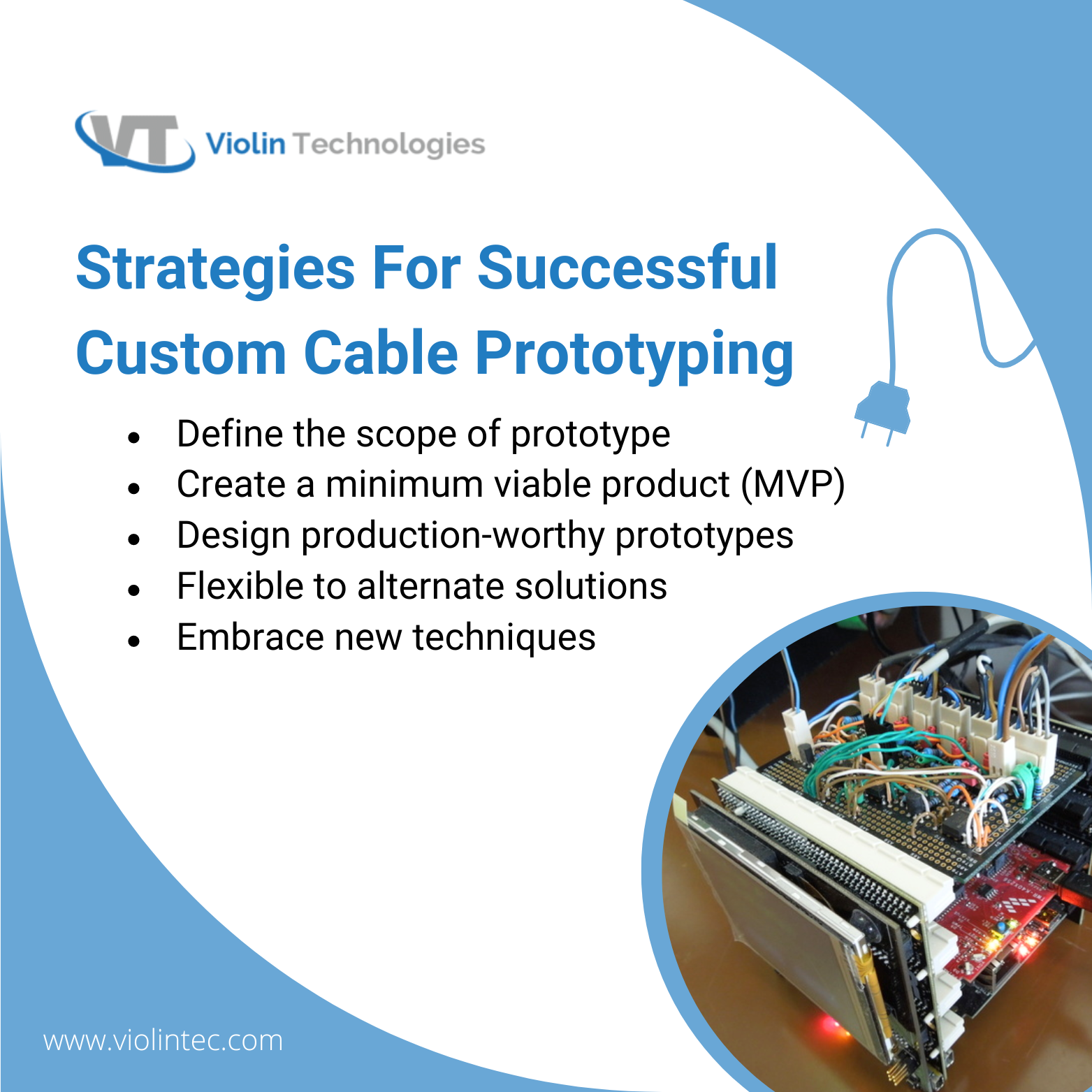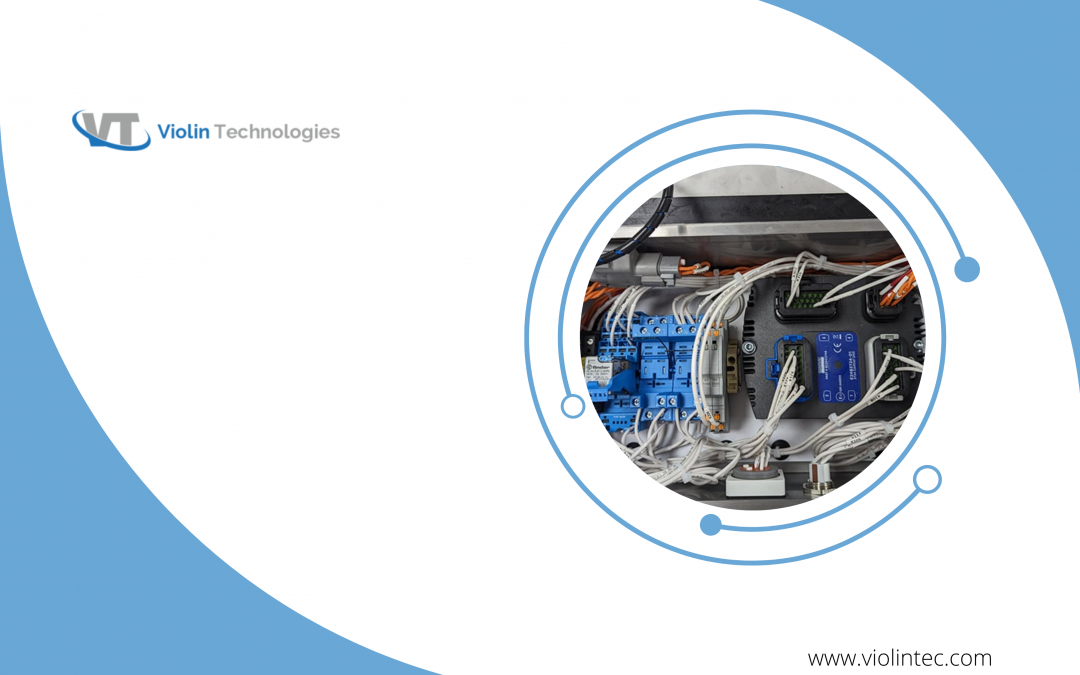What we cover in this blog?
Key Takeaways
- Custom cable prototyping bridges the gap between conceptual designs and real-world applications.
- It empowers designers and engineers to test theories and refine details within resource limitations.
- Prototyping preempts potential issues, ensuring the end product meets required specifications.
- The result is a final product that exceeds performance standards.
What Makes Prototyping Crucial
Custom cable prototyping is not just a step in cable development but a proactive measure that bridges the gap between conceptual designs, technical constraints, and real-world applications. It empowers designers and engineers to test theories within resource constraints, refine details, and preempt potential issues; thereby, the end product not only meets but exceeds the required specifications and performance standards. Now, let us explore why it’s so crucial.
Assessing Electrical Functionality
It’s important to thoroughly test a prototype of a cable management wire harness to ensure it can effectively transmit data and operate within specified frequencies, voltage, and current ratings. This prototyping is especially crucial for cables with twisted and shielded pairs, as prototyping helps confirm their performance without any signal integrity issues.
Determining Cable length
When designing prototypes for a cable, the actual routing path or cable length must be a key consideration. For instance, consider designing a cable to be 15 inches long, only to discover during installation that it must be 20 inches to fit the actual routing path. Overlooking this aspect can render the prototype useless and lead to a significant order of scrap cables, resulting in inflated costs and wasted resources.
Hence, thorough prototyping is not just a best practice but a cost-saving necessity to avoid such issues and ensure efficient and economical mass production.
Proper Connector compatibility
When choosing connectors, it’s vital to make the right selection to prevent functional failures or damage to connected electronic devices. Prototyping is an important step in ensuring that electronic components and connectors not only fit together physically but also function properly in the intended environment.
Cable Prototyping Challenges
Navigating the prototyping phase in custom cable development offers an opportunity to overcome complex challenges by applying innovative solutions. This crucial phase involves transitioning from theoretical designs and functional testing to practical applications and requires addressing multiple program challenges with a finite amount of time and limited resources.
1. Limited sources
Material availability and supply chain constraints are significant issues during global disruptions. Overcoming these challenges involves building strong relationships with multiple suppliers and considering alternative materials or sources. Finding wire harness manufacturers that can support both the prototyping and production phases is vital for achieving success while controlling costs, security risks, and timelines.
Buyers should consider production sources from numerous physical locations around the globe to further cost considerations and ease the burden on logistics networks in case of disruptions. Manufacturers with both domestic and offshore capabilities offer the benefits of local assembly, storage, and management, along with low-cost offshore sourcing.
2. Design team testing procedures
Design engineers must ensure that the cable meets all technical requirements, including electrical performance, temperature resistance, and mechanical durability. Thorough testing and advanced simulation tools can predict and address potential issues early on. Flex cycle testing can stress cable jackets to failure. It’s important to conduct stress testing on the bulk wire early rather than waiting until a finished harness is built.
3. Effective cost management
When prototyping, it’s important to manage costs and work within budget constraints. Not all prototypes need to use the most advanced technologies or expensive connectors. By prioritizing essential features, using cost-effective design approaches, and opting for off-the-shelf components when possible, engineers can address financial challenges early on. Efficient project management and agile methodologies can accelerate the prototyping process without cost-effectiveness compromising quality.
Cable assemblies and electrical contract manufacturing companies in Chennai can assist companies in carefully planning out the material and budget.

Strategies For Successful Custom Cable Prototyping
1. Define the scope of prototypes
It’s important to have a clear understanding of the goals and resource allocation constraints of the prototype. Identifying essential features and determining which ones can be temporarily set aside will help us focus our prototyping efforts more effectively.
2. Create a Minimum Viable Product (MVP)
When facing constraints such external factors such as market demand and limited time and budget, it’s beneficial to prioritize the development of an MVP. This prototype includes the most essential functionalities.
3. Design production-worthy prototypes
By carefully planning and budgeting, prototypes that closely resemble the final product can be designed. The creation of such a protocol is a crucial step in creating prototypes for testing under real-world conditions.
4. Research on success stories
Consider reaching out to an industry expert or a colleague with practical experience in wire technology. It’s beneficial to analyze both successful and challenging instances of custom cable assemblies prototyping to gain deeper insights into common challenges in the process.
For example, researching case studies where a specific connector was replaced due to unavailability can provide valuable insights into the overall design, material properties, and functionality of the cable.
5. Open to alternate solutions
Embracing alternative solutions and engaging a dedicated team in early discussions fostering collaboration with experts during the design process can greatly enhance the success of prototyping outcomes.
For instance, seeking a consultation with an expert engineer can yield invaluable insights into feasible options and customized solutions to address specific needs.
6. Embrace new techniques
In a world where every new employee has a 3D printing setup, companies should embrace this technology as a cost-effective and efficient way to create products. 3D printing can be used to replicate intricate over-molded features and modular components in a fraction of time and cost. Keeping an eye on how new technologies and industry trends are impacting cable design, manufacturing services, and prototyping can give companies a competitive edge.
Contract manufacturing company in Chennai provides expert advice on new trends and technologies
Conclusion
Ensuring compliance with regulations and standards is crucial, requiring a current understanding of relevant industry regulations and standards and the integration of compliance checks into the prototyping process. Creating custom cable prototypes is a complex but essential part of cable design and production.
By fully regarding regulatory compliance, grasping its importance, recognizing and preparing for the challenges, and implementing effective mitigation strategies, engineers and designers can navigate this process with greater confidence and efficiency. This expertise leads to the development of successful, functional, and reliable final products that meet the exacting demands of diverse applications.
Frequently Asked Questions
1. What is often the hardest part of building a prototype?
Creating a prototype takes time, and meeting tight deadlines while maintaining an effective prototype can be challenging. Using the wrong materials may lead to inaccurate testing and faulty results.
2. What are the considerations of cable design?
One should consider the following four important characteristics when evaluating servo cables: voltage, current, shielding, and flexibility.
3. What are the challenges in cable prototyping, and what strategies to overcome them?
Custom cable development prototyping presents challenges in transitioning from theoretical designs to practical applications, involving solving programming challenges within limited space and resources.
4. What are the key considerations in prototype design?
Creating a successful prototype requires a strong understanding of project needs, user requirements, and technical constraints. This article outlines key considerations for the design phase, discussing the design process for prototypes, user-centric design, and the integration of user testing data to ensure prototypes meet user needs and expectations.

Aparna Sushumna
About the Author
Aparna Sushumna, a mother to a hyperactive toddler who is all over the house. I aspire to be a decent content developer. A Bachelorette of technology says my qualification but I anticipated being a singer. Thanks to the recession, I dwelled into various jobs, from coding to being a tech support executive to a help desk professional, only to conclude that there is something else I wish to do. Here I am to accomplish my profound passion for content writing. Music, nature, jewelry, beauty, mythology, life quotes, celebs, and their life, being my areas of interest.

